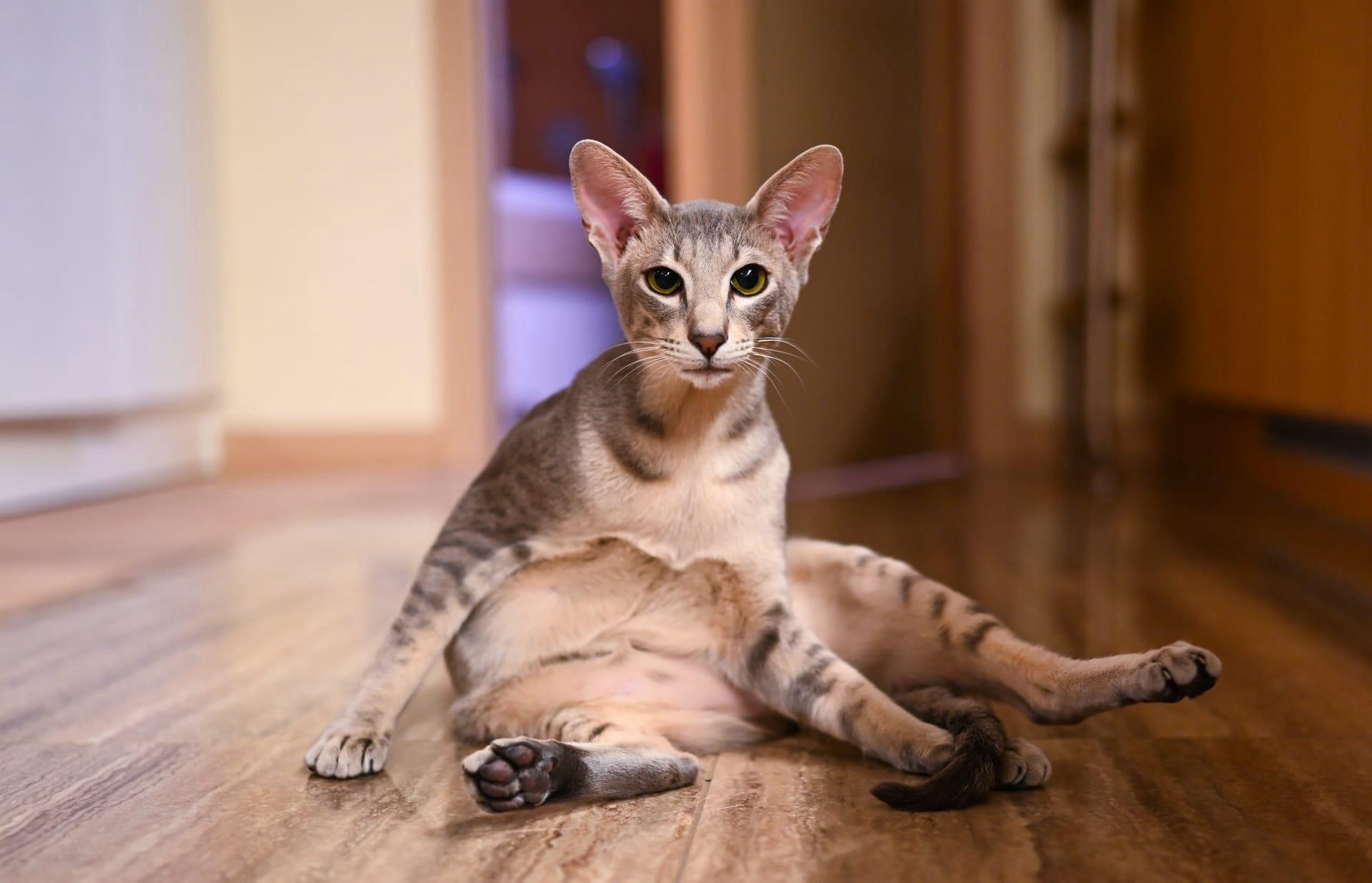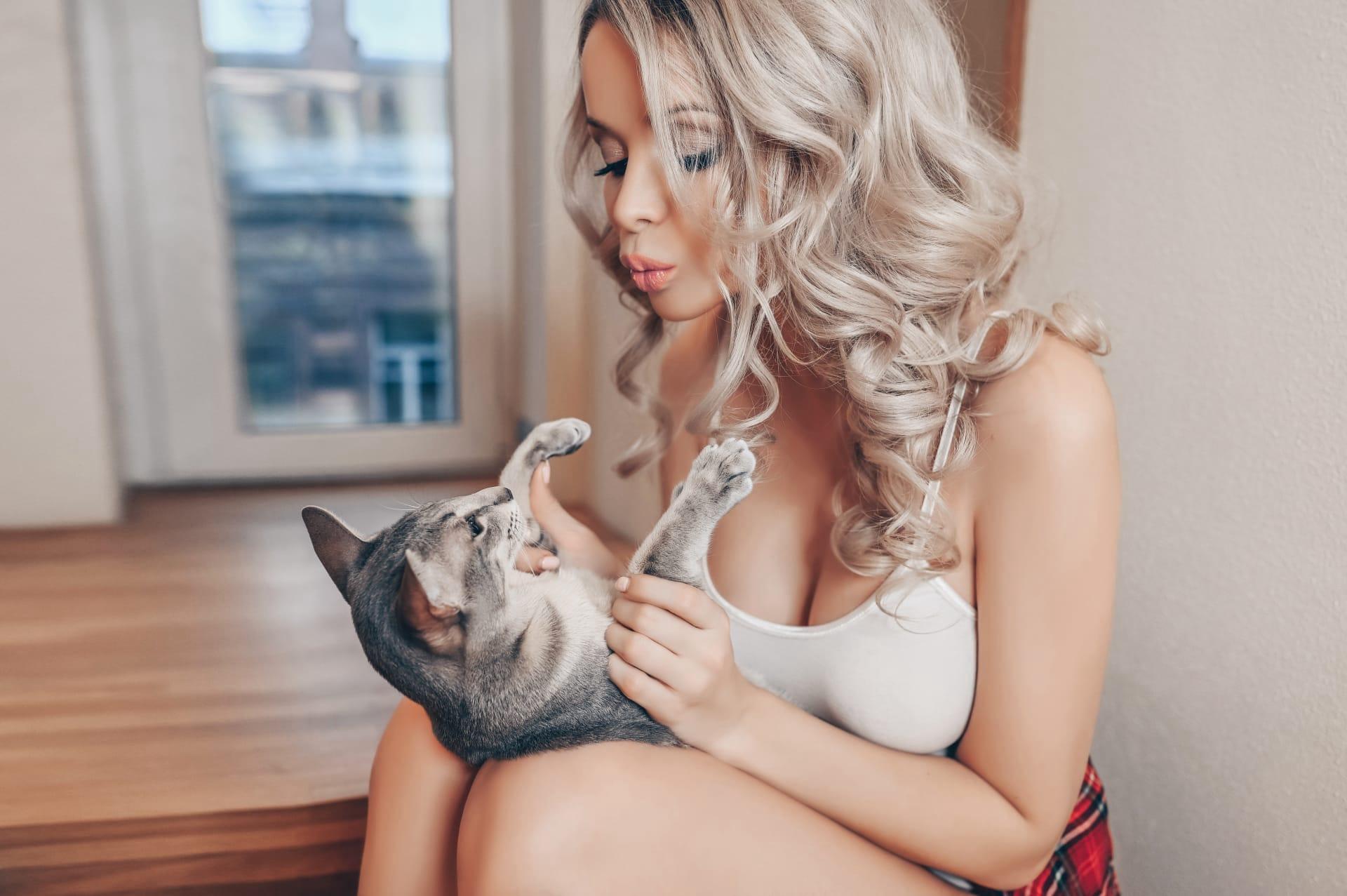1
The Peterbald cat, known for its distinctive hairless appearance, originated in Russia in 1994, stemming from a crossbreed between a Donskoy cat and an Oriental Shorthair. This unique blend not only gave rise to the Peterbald's signature lack of fur but also contributed to its slender, elegant body and long, narrow head, which are hallmark traits of the breed. Remarkably adaptable in terms of coat types, Peterbalds can range from completely bald, to a peach fuzz covering, and even to a full coat, which they can lose over time.
One fascinating aspect of the Peterbald is its skin texture, which feels warm and soft to the touch, akin to a peach. This characteristic makes them particularly sought after for their tactile appeal. Additionally, their skin produces more oil than that of furry cats, necessitating more frequent baths to maintain their hygiene and prevent oil buildup. Despite their lack of coat, Peterbalds are known for their robust health, but they do require protection from cold temperatures and sunburn due to their exposed skin.

2
Peterbald cats exhibit an extraordinary level of sociability and affection towards their owners, often described as more similar to dogs in behavior than to cats. They are known to follow their owners around the house, craving attention and interaction, and they communicate their needs and desires through a variety of vocalizations. This breed's intelligence and social nature make it capable of forming deep bonds with humans, and they are often used in therapy settings due to their empathetic nature.
Despite their slender appearance, Peterbalds are quite athletic and enjoy engaging in physical activities. They possess a curious and adventurous spirit, often exploring their surroundings with agility and grace. This breed enjoys climbing and perching in high places, which satisfies their need for observation and surveillance of their environment. Owners are encouraged to provide ample playtime and interactive toys to keep these active cats mentally stimulated and physically fit.

3
The genetic mutation responsible for the Peterbald's hairlessness is different from that of the more widely recognized Sphynx cat. This distinction lies in the gene responsible for their hairless trait, with Peterbalds carrying a dominant gene as opposed to the recessive gene found in Sphynxes. This means that when a Peterbald is bred with a coated cat, there's a higher likelihood of producing hairless offspring, making their breeding a fascinating study in genetics.
Peterbalds are also known for their varied coat types, which are categorized into five different textures: bald (also known as 'rubber bald'), flock, velour, brush, and straight coat. Each type presents a unique look and feel, from the completely hairless to a soft, downy fuzz, and even a wiry brush coat. Over time, the coats can change, with some kittens born with one coat type developing another as they mature.

4
Another intriguing fact about the Peterbald cat is its body temperature, which is slightly higher than that of the average domestic cat. Their normal body temperature can reach up to 102.5°F (39.2°C), which contributes to their warmth when cuddling. This higher body temperature, while perfectly normal for the breed, means they seek out warm spots in the home, often basking in sunlight or snuggling under blankets with their owners.
Regarding their reproductive capabilities, Peterbald cats are known for their relatively large litters compared to other cat breeds. A single litter can consist of up to six kittens, which is somewhat unusual for such a rare and refined breed. This prolific nature helps maintain the breed's population and allows for the continuation of its unique genetic lineage, contributing to the diversity within the Peterbald breed.

5
Peterbald cats are not just unique for their appearance but also for their adaptability to various climates, despite their lack of fur. They have a high metabolic rate, which helps them regulate their body temperature effectively. However, owners need to provide appropriate care during extreme weather conditions, such as offering warm clothing during cold climates and ensuring they have access to shaded areas and sunscreen when exposed to direct sunlight to prevent skin damage.
The breed's vocalization is distinct and varied, with Peterbald cats known to communicate in a range of sounds from traditional meows to more unusual chirps and trills. This vocal repertoire allows them to express their needs, desires, and emotions in a way that is both endearing and effective, strengthening the bond between them and their human companions. Their vocal expressions combined with their affectionate nature make them highly communicative pets, always eager to 'talk' with their owners.